Do cats like the cold or heat? The short answer: heat, most of the time.
Cats are natural heat-seekers. You’ve probably caught your cat sprawled in a sunny window, melting into the floor like a furry pancake. The reason behind this behavior is that their wild ancestors originated from desert regions, where high temperatures were a constant part of daily life. Today’s housecats still carry that warm-weather preference in their DNA.
Even their bodies run hotter than we do. A cat’s normal body temperature ranges from 101°F to 102.5°F, which makes chilly rooms feel colder to them. Warmth relaxes their muscles, so they feel safer and calmer in warm spots. Sunlight, too, plays a small role in vitamin D absorption, although cats mostly get this nutrient from their food.
But heat tolerance isn’t one-size-fits-all. A Maine Coon with a thick winter coat handles warmth differently than a hairless Sphynx. So, what’s the best temperature for your cat?
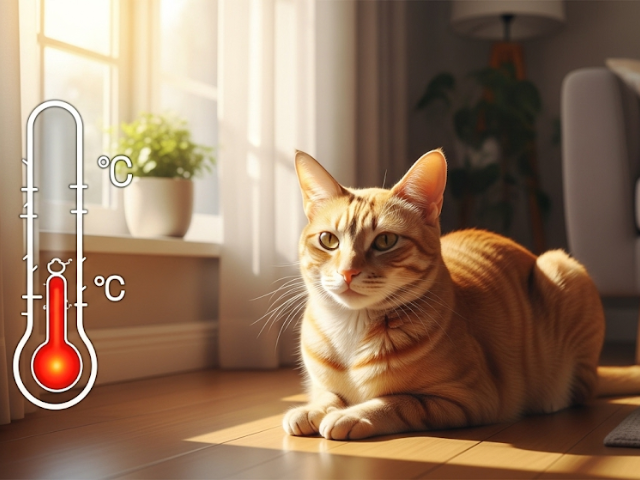
So, what’s the magic number for your cat’s comfort? Every cat is a little different, but there is a general temperature zone where most cats feel happy and comfortable.
Most cats feel good when it’s between 70 and 80 degrees Fahrenheit (21 to 27 degrees Celsius), but that’s not a hard and fast rule! Different factors can change your cat’s ideal temperature.
How do you determine if your cat is at ease? Look for these signs:
Noticing these signs in your cat helps you figure out if cats like the cold or heat more.
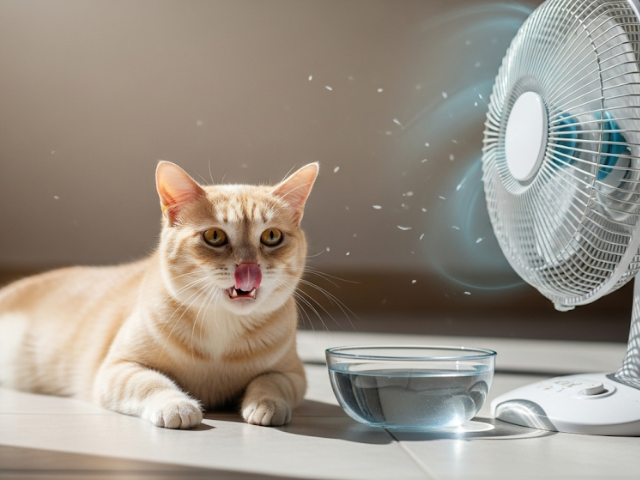
While cats generally like heat, there’s a limit. Your cat can get too hot, and this can become serious very quickly. That’s why it’s crucial to recognize when the temperature is too high for them, as overheating is a real danger.
Watch for these signs that your cat is getting too hot:
If your kitty shows these signs, you need to cool your cat down safely and quickly. Move them to a cooler spot in your home right away. Offer fresh, cool water to drink.
You can also gently dampen a cloth with cool (not ice) water and wipe their paws or ears, as these parts help cats release heat. Never use ice water, as it can shock their system. For long-haired cats, a cool bath might help, but only if your cat is okay with it and isn’t too stressed.
Preventing heatstroke is much better than treating it. Under no circumstances should you ever abandon your cat alone in a parked vehicle, even for a moment. The heat inside a car, when not moving, can rise rapidly and dangerously.
If your cat goes outside, always make sure they have plenty of shade and fresh water. Indoors, use fans or AC on hot days.
Groom long-haired cats regularly to remove excess fur, which helps them stay cooler. Finally, limit playtime during the hottest parts of the day, usually midday to late afternoon.
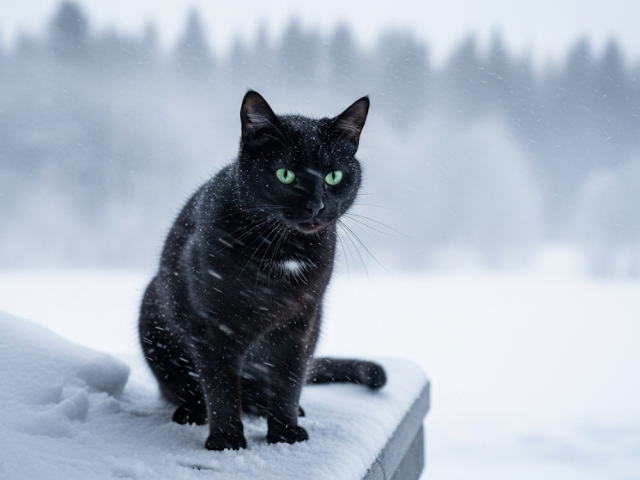
Most cats are not big fans of cold weather. While their fur helps, it only goes so far. Temperatures below 50°F (10°C) can be uncomfortable and even dangerous.
Too much cold exposure can lead to hypothermia and frostbite. It can also weaken your cat’s immune system, making your whiskered baby more prone to illness. Since cats prefer heat more, they will avoid cold if they can.
If your cat is shivering, huddling tightly, or acting lethargic, they might be too cold. Cold ears, paws, or tails are also signs they need more warmth.

As temperatures drop, your cat may need some extra help staying warm.
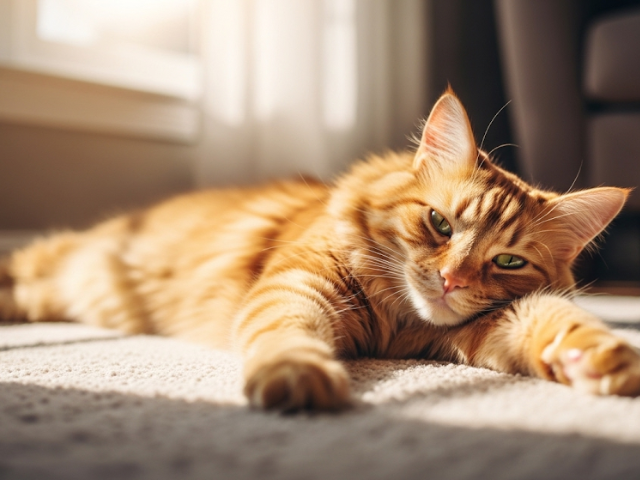
Your cat can’t tell you with words if they’re too hot or too cold. But don’t worry, they show you in other ways. You can learn a lot by watching how your cat acts. Just by watching your cat, you’ll start to see what they need. You can tell if they are happy with the temperature or if something needs to change to make them more comfortable.
To know if your cat feels hot or cold, observe the following body language:
A cat curled up in a tight ball indicates they’re trying to keep themselves warm. But if you see them stretched out long, even with their belly up, they are usually feeling nice and comfy, or they might be trying to cool themselves down a bit.
If your cat is always following the sunshine, they might be a bit chilly. But if your cat often looks for shady spots or likes to lie on cool tile floors, they might be feeling too warm.
Gently feel your cat’s ears and paws. If they feel cold to your touch, your cat might be chilly. If their ears and paws feel particularly warm, they could be a bit too hot.
Where does your cat choose to nap? Their choice of spot can mean a lot.
If you notice your cat cuddled up near a heater or soaking up the sun, they might be feeling a bit cold and just trying to warm up.
If your cat often lies on cool surfaces like tile floors or in a dry bathtub, it might be feeling too hot. Cats love to find shady spots to relax, so if you notice this behavior, they’re likely trying to cool down.
Keep an eye out if your cat suddenly stops using their usual favorite napping spot and picks a new one that’s much warmer or cooler. For example, if they leave their sunny spot for a cool, shady one, it’s a big hint that they are not comfortable and their needs have changed.
Little changes in how your cat acts can tell you a lot:
If your cat seems exhausted, has low energy, or doesn’t want to move much, they might be too cold. Being too hot can also make your cat look tired. Sometimes, if they’re too hot, they might instead seem restless and uncomfortable.
If your cat starts licking their fur a lot more than usual, it might be because they feel too hot or too cold. Also, if your cat isn’t grooming itself more than they usually do, they could be feeling unwell, possibly because they feel too hot or too cold.
Some cats will make more noise when they are not comfortable. Your cat may be trying to tell you something if it meows more than usual. Maybe they need your help to feel warmer or cooler.
You can help your cat with small comforts, but sometimes they need to see a veterinarian. If you suspect your cat is suffering from heatstroke or hypothermia, or if they show any of the severe signs mentioned, get veterinary help right away.
Your vet is the best person to figure out if your cat’s actions are because they’re too hot or cold, or if there’s another health reason. Talking to your veterinarian helps you understand whether your cats like the cold or heat.
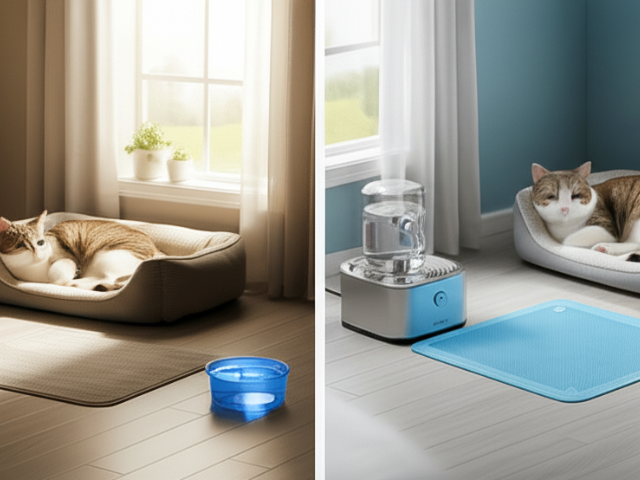
Helping your cat stay happy means giving them choices and altering their care as the weather changes. Whether your cat likes the cold or heat, you can keep them comfy.
Offer them both warm spots and cool spots in your home. It could be a comfy bed by a sunny window when they want warmth or a shady, cool area in another room. Change how you care for them with the seasons. When it’s hot, help them cool down. When it’s cold, help them stay warm.
Drinking enough water is always vital, no matter the temperature. Keep clean, fresh water available in and out of your home. Visiting the vet frequently is also crucial for their health. If a cat is healthy, it can keep its body temperature in check. Your cat depends on you to make their home a comfortable place where they can flourish.

A little effort to maintain the ideal temperature means a lot to your cat’s well-being. They rely on you to create a cozy, safe environment where they can relax and enjoy life. Understanding whether cats like the cold or heat and how they handle temperatures ensures your feline friend lives a happy, healthy life.

